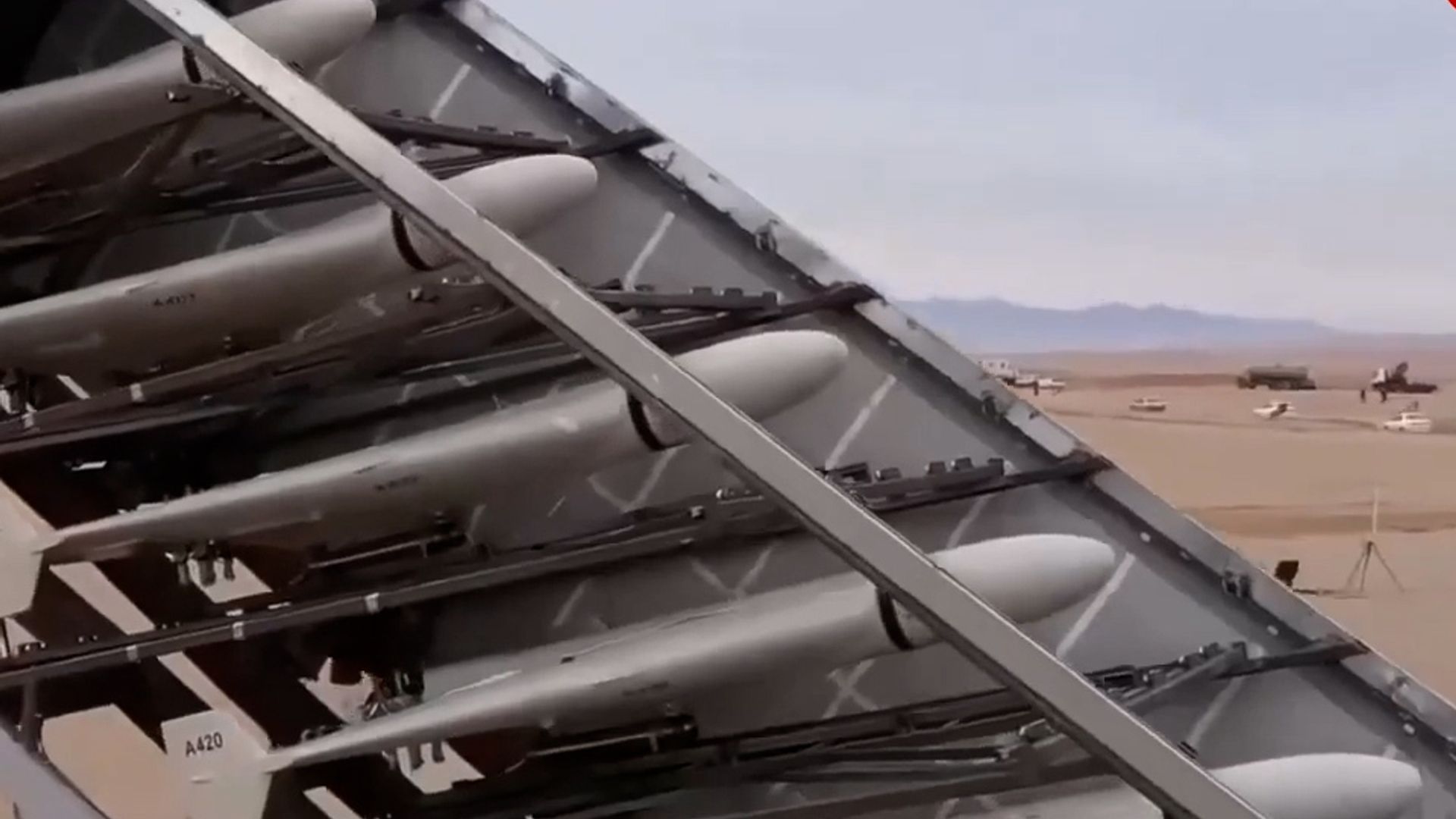
[Ryan Robertson]
RUSSIA’S AIR FORCE IS TAKING A BEATING IN UKRAINE. THE RUSSIANS STILL MAINTAIN AIR SUPERIORITY, THOUGH, AND WITH SOME NEW INNOVATIONS TO THEIR DRONE FLEET THE RUSSIANS ARE READY FOR A WINTER OF WARFARE UNLIKE ANYTHING WE’VE SEEN YET.
SINCE THE START OF THE WAR, UKRAINE SAYS IT DESTROYED 324 RUSSIAN JET FIGHTERS AND BOMBERS, AND ANOTHER 324 HELICOPTERS. THOSE EXACT FIGURES CAN’T BE CONFIRMED, BUT OPEN-SOURCE INTELLIGENCE PUTS BOTH RUSSIAN FIXED WING AIRCRAFT AND HELICOPTER LOSSES AT AROUND 300 FOR EACH CATEGORY. SO, WE’RE IN THE SAME BALLPARK.
RUSSIA IS LOSING THOSE VEHICLES TO A NUMBER OF THINGS. YES, THERE ARE COMBAT LOSSES AND UKRAINE IS GETTING REALLY GOOD AT USING LONG-RANGE MISSILES AND DRONES TO ATTACK RUSSIAN AIRFIELDS AND BASES WHILE JETS AND HELICOPTERS ARE STILL ON THE GROUND.
BUT RUSSIA IS ALSO LOSING PLANES TO THINGS LIKE POOR MAINTENANCE AND FRIENDLY FIRE. UKRAINE’S AIR FORCE SAID RUSSIAN AIR DEFENSE MISSILES SHOT DOWN A RUSSIAN SU-25 JET BOMBER ON DECEMBER 17TH. THE DAY BEFORE, UKRAINE BLEW UP A SU-34 BOMBER DURING AN ATTACK ON A RUSSIAN AIR BASE.
LIKE I SAID EARLIER, DESPITE THESE LOSSES RUSSIA STILL HAS A NOTABLE ADVANTAGE IN TERMS OF AIR POWER OVER UKRAINE. TO MAINTAIN THAT EDGE, THOUGH, RUSSIA IS RELYING LESS ON TRADITIONAL AIRCRAFT AND MORE ON DRONES.
THE SHAHED-136 FROM IRAN IS ONE OF THE RUSSIAN ARMED FORCES FAVORITE SUICIDE DRONES. RUSSIA NOW PRODUCES A DOMESTIC VERSION OF THE UAV. SHAHED’S DON’T NEED A RUNWAY TO LAUNCH, AND APPARENTLY NOW COME IN A CONTAINERIZED VERSION. THE SPOKESMAN FOR UKRAINE’S AIR FORCE CONFIRMED THIS LATEST DEVELOPMENT.
PUTTING SHAHEDS IN WHAT LOOK LIKE SHIPPING CONTAINERS DOESN’T JUST HELP HIDE THE DRONES, IT ALSO MAKES THEIR LAUNCH SITE MUCH LESS PREDICTABLE. RUSSIA CAN PROBE UKRAINE’S AIR DEFENSES AND REPOSITION QUICKLY IF THEY FIND A HOLE.
RUSSIA’S SUICIDE DRONE INNOVATIONS AREN’T LIMITED TO AERIAL ATTACKS EITHER. THE RUSSIAN MINISTRY OF DEFENSE SAYS IT’S TESTING OUT A NEW UNMANNED SURFACE VESSEL, CALLED THE ODUVANCHIK, OR DANDELION. RUSSIA PUT IN FOR AN ORDER OF 10 ODUVANCHIKS THAT WILL APPARENTLY GO STRAIGHT INTO REAL-WORLD TESTING AGAINST UKRAINE. THE WATER-BORN DRONE IS SMALLER THAN THE SEA BABIES UKRAINE USES, BUT CAN STILL CARRY A PAYLOAD OF MORE THAN 1,300 POUNDS.
FOR THE UKRAINIANS, THOUGH, THE MOST CONCERNING DRONE INNOVATION BY RUSSIA RIGHT NOW IS THE EMERGENCE OF MORE NIGHT VISION AND THERMAL IMAGING SENSORS ON DRONES.
UP UNTIL NOW, THANKS TO WESTERN DONATIONS, UKRAINE ENJOYED SOMEWHAT OF AN ADVANTAGE IN NIGHTTIME OPERATIONS. THERMAL IMAGING AND LOW-LIGHT SENSORS GAVE UKRAINE’S TROOPS THE ABILITY TO MOVE AROUND SOMEWHAT SAFELY AT NIGHT. NOT ANYMORE, THOUGH.
REPORTS FROM THE FRONTLINES SAY RUSSIA IS USING FPV DRONES EQUIPPED WITH THERMAL SENSORS TO STRIKE UKRAINIAN TARGETS. THE KYIV POST SPOKE WITH SEVERAL UKRAINIAN SOLDIERS WHO SAID THE NEW PRACTICE PUTS AT RISK UKRAINE’S ABILITY TO ROTATE TROOPS IN AND OUT OF COMBAT ZONES AND RESUPPLY THEM.
NOW, UKRAINE CAN MAKE SOME ADJUSTMENTS TO PROTECT AGAINST THE NEW THREAT, AND IT DOESN’T SEEM LIKE RUSSIA IS USING THERMAL SENSORS WIDELY JUST YET. BUT WHEN IT COMES TO THERMAL IMAGERY, THERE’S ONLY SO MUCH HEAT YOU CAN MASK. WHICH IS WHY MANY TROOPS ON UKRAINE’S FRONTLINES ARE SAYING THIS IS A SERIOUS PROBLEM, AND THEY’RE WORRIED ABOUT WHAT COULD HAPPEN IF RUSSIA WERE ABLE TO FIELD SUICIDE DRONES EQUIPPED WITH THERMAL SENSORS AT AN INDUSTRIAL SCALE.







